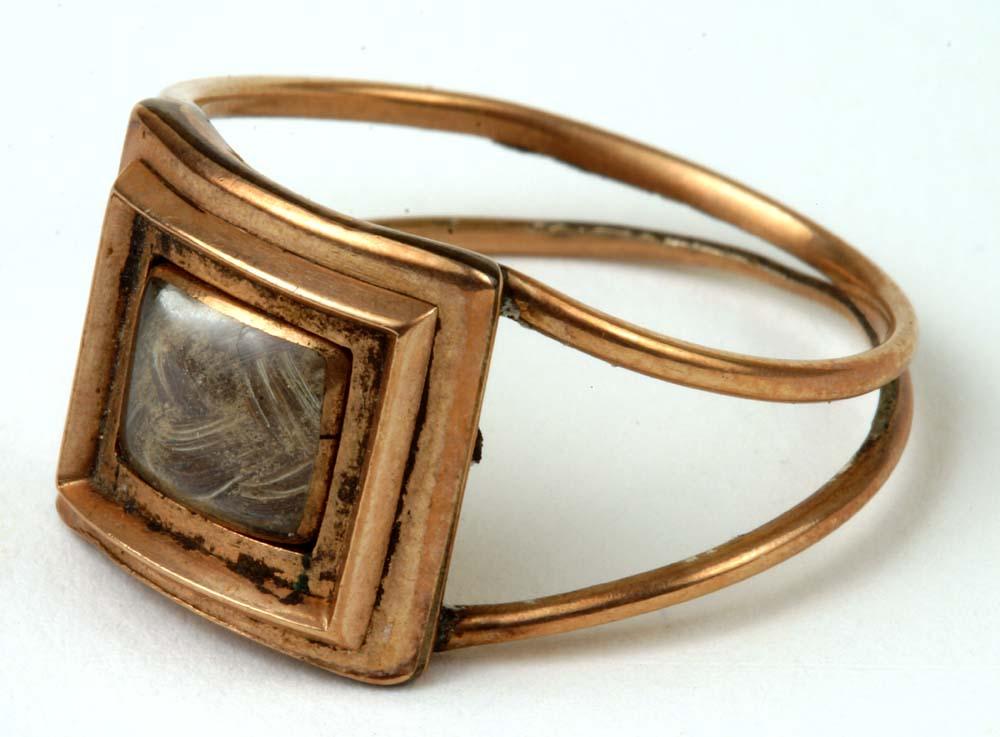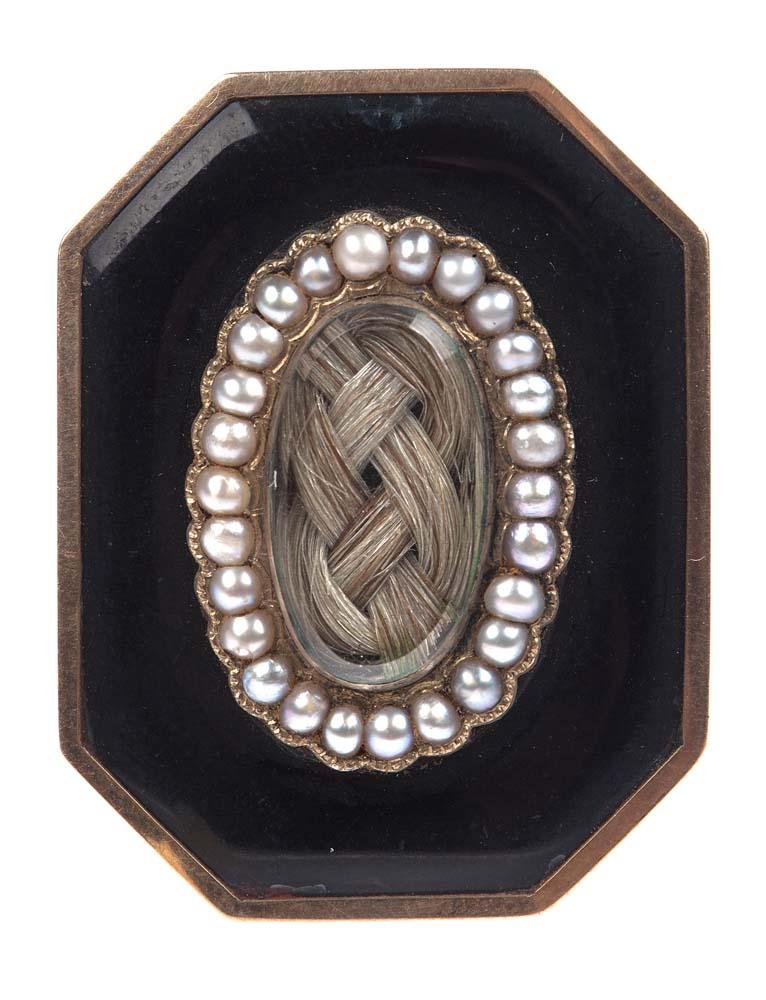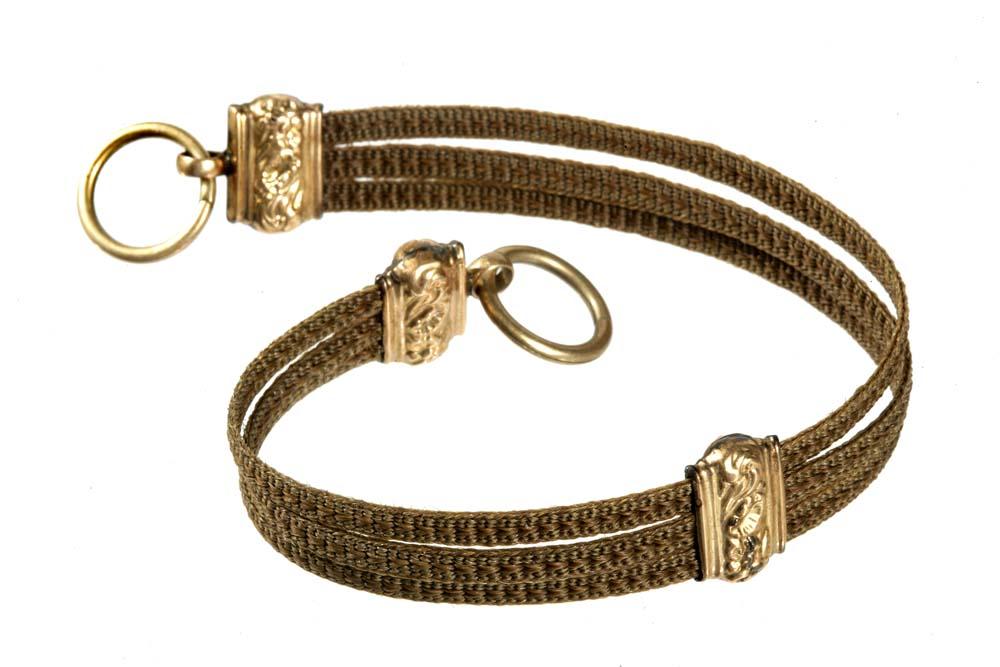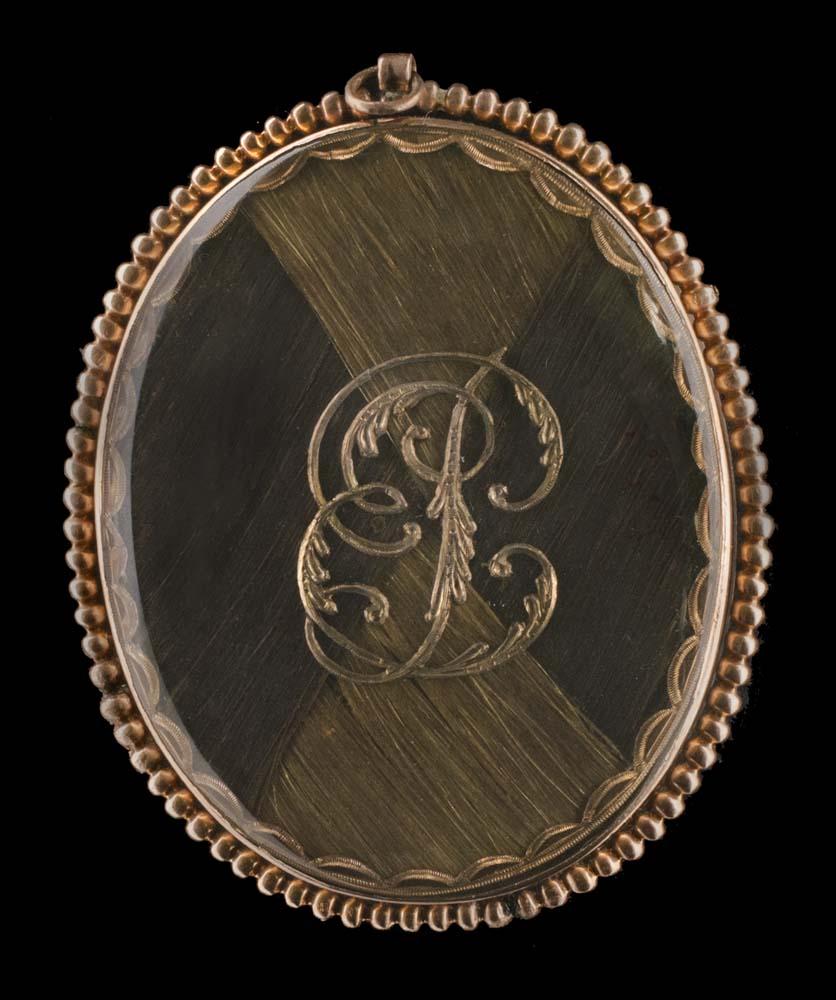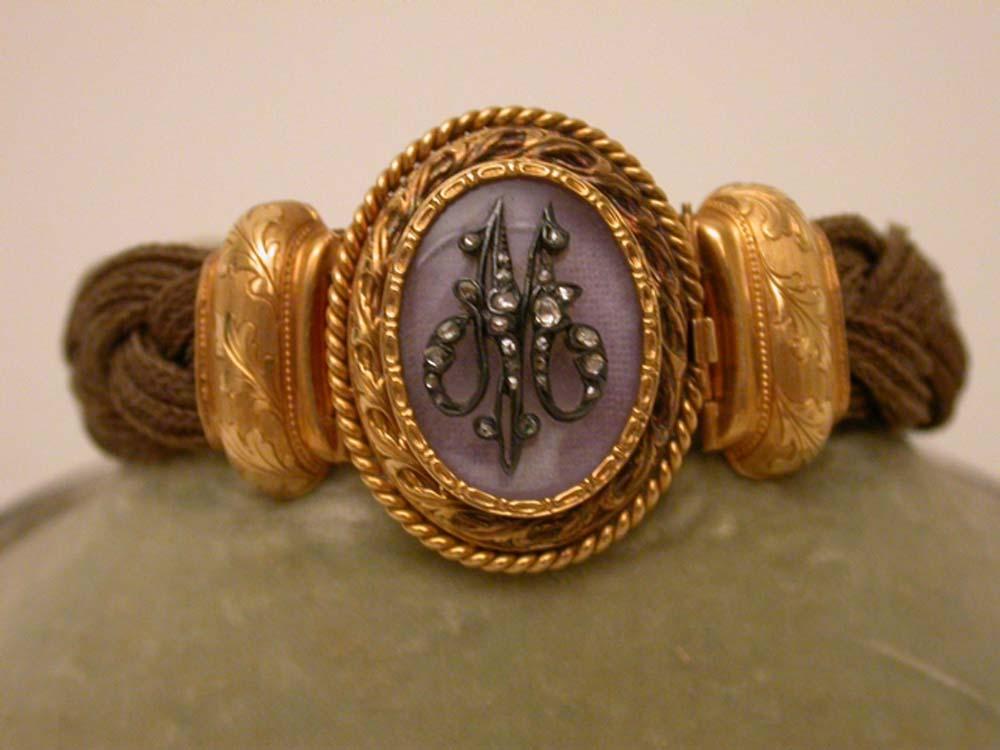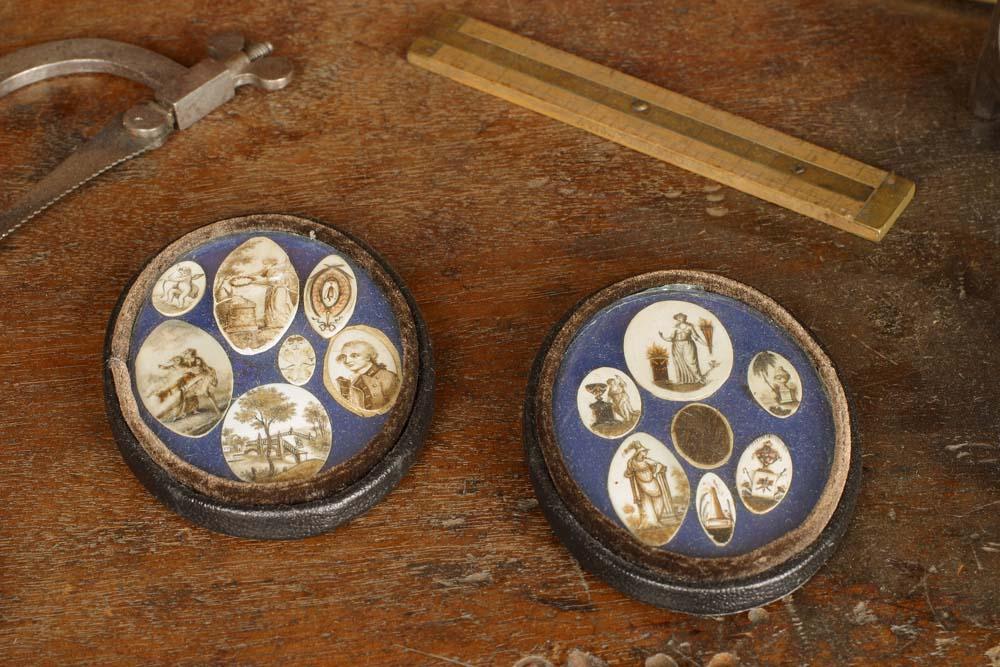“Hair has a long history of being a keepsake,” said Dr. Debra Schmidt Bach, Curator of Decorative Arts at the New York-Historical Society and organizer of the exhibition. She added that in the United States, the interest in representing the departed through objects was fueled by two momentous national losses: “George Washington’s death was one of them. Right after he died, you start to see a whole range of different kinds of memorabilia memorializing Washington. The second major event was Abraham Lincoln’s death.”
Lincoln memorial badges—frequently adorned with black ribbons—were widely sold, sparking a trend that continued in processions honoring civic leaders and other prominent figures. Hair, too, was involved in the collective mourning for the late president: Life Cut Short includes a letter from his eldest son—Robert—to Gustavus Vasa Fox, Assistant Secretary of the United States Navy, containing a lock of his hair. Especially in an era before photography, these physical reminders of a person, which escaped the decay of the rest of the body, could guard the memory of the dead.




